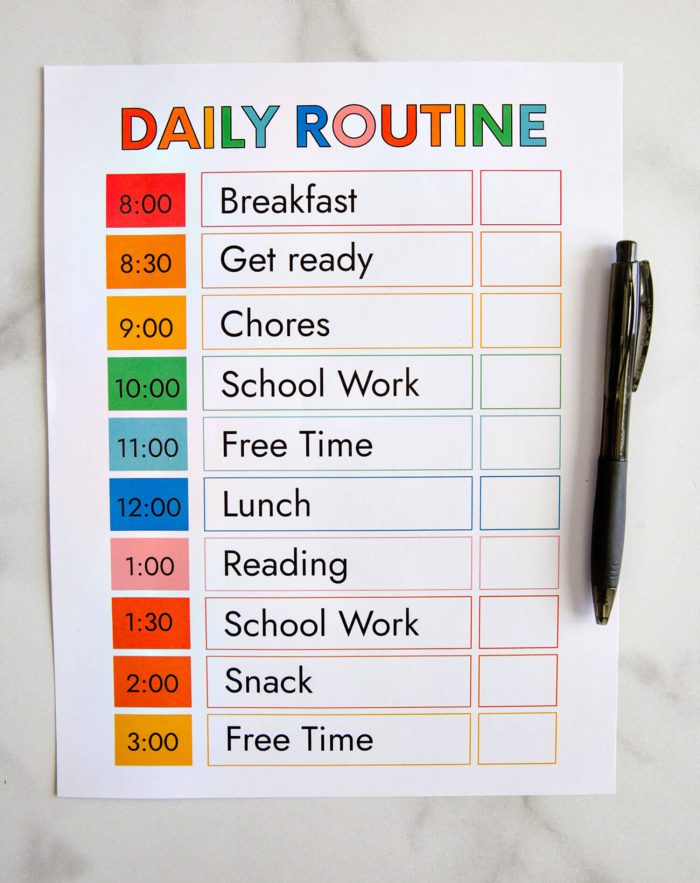Why is a daily schedule important?
A daily schedule helps you prioritize your wants and needs efficiently and gives you structure to support your productivity. Benefits of a daily schedule include:
- Schedule time to meet all daily goals
- Increase productivity
- Limit delays
- Build healthy habits
- Enjoy a good work-life balance
How to create a daily schedule
If you want to create a productive daily schedule that meets your specific needs, follow these steps:
1. Write everything down
Start by writing down every task, both personal and professional, that you want to complete during a normal week. Try to brainstorm rather than edit or organize. Remember to include tasks you complete occasionally, such as changing the sheets or mowing the lawn, and everyday tasks, such as making breakfast or washing the dishes.
2. Identify priorities
Once you have your list, review it and identify daily priorities. Consider using a highlighter to help organize your wants and needs visually into work and personal categories. For example, highlight daily work needs, such as answering emails or returning phone calls, in blue and highlight personal desires, such as reading a book for fun or going out for coffee with friends, in green. Do this for a complete list of your tasks.
3. Note the frequency
Review your highlighted list and mark the frequency with which you want or need to complete your tasks. Write this number next to each task. For example, write the number “7” next to “make breakfast” because you plan to do this every day. Write the number “1” next to “change the sheets” because you usually do that task once a week.
4. Group similar tasks
Determine if there are similar tasks that you can group together for efficiency. For example, if you have “wash dishes” and “wipe surfaces” on your daily to-do list, consider doing them together or one after another because they require the same equipment and are performed in the same area. House. Categorizing tasks can also make it easier for you to complete each item on your checklist.
5. Make a weekly chart
Create, buy or print weekly charts. Start filling it with personal needs and daily and weekly work. Identify where it makes sense to complete recurring tasks each week to keep your schedule as open as possible. For example, if on Monday you only have four priority tasks, consider adding a weekly task, such as mowing the lawn instead of doing it on Saturday when you have six priority tasks to complete.
6. Optimize your tasks
Review your weekly schedule and determine if there are areas or tasks you can simplify or optimize to save time. For example, if you usually go to the grocery store on Sundays but don’t have time to take care of other errands that day, consider a grocery delivery service or move those errands to a weekday. Do this on days that seem full of activity.
7. Sort tasks
Once you’ve optimized your weekly schedule, create a loose hourly schedule for each day’s tasks. Consider blocking times, such as “morning,” “midday,” “afternoon,” and “evening” rather than an hour-by-hour plan. This way, if a task takes longer than expected or you have to take care of an emergency, you can still maintain your schedule.
8. Stay flexible
Try your schedule for a week or two and adjust as needed. It may take several weeks for you to establish a routine that meets your needs, both personal and professional, so be patient. Remember to allow for daily flexibility as unexpected tasks may arise.












